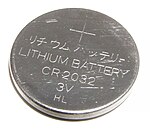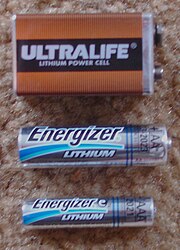Miss_Piggy
TSP Strategist
- Reaction score
- 9
Reducing the Amount of Juice Electronic Gadgets Consume
By DAVID POGUE April 24, 2008
"Vampire power" has been bugging me ever since I first heard of it.

It's the juice consumed by electronic gadgets even when they're turned off (also called phantom loads, standby power or leaking electricity). They just sit there, plugged in, sucking electricity, at a cost to you and to the environment. According to the Energy Department, vampire gadgets account for about 25 percent of total residential electricity consumption in the U.S.
Now, these gadgets weren't meant to be evil; they were designed to remain semi-on for good reasons. Lots of them, like TV sets and stereos, have to remain half-awake in case you pick up the remote control and press the On button. Printers, speakers, scanners and other computer gadgets keep one eye open just in case some signal is sent to them from the computer. Hundreds of gadgets remain in standby mode so that their clocks or other status gauges remain up to date.
Nonetheless, vampire power has gone off the rails. Cumulatively, these gadgets cost us, our country and our environment way too much for what they give us.
The eco-magazines cheerfully suggest that we go around our houses unplugging everything every night. That, obviously, is not a suggestion that the masses will be adopting anytime soon.
You can plug certain phantom gadgets into a power strip, of course, and just turn that on or off every night. But that, too, is not a habit most people will stick to for more than about a week.
But come on. If they can put a man on the moon, surely they can come up with an *automatic* solution to phantom power.
APC has taken a healthy step in the right direction with its Power-Saving SurgeArrest surge protector power strip. You plug your computer into the master outlet, and you plug your external gadgets (speakers, printer, external hard drive, scanner, monitor) into the three outlets labeled "Controlled by Master."
You can probably see where this is going: when your computer turns off, the strip cuts power to those secondary outlets as well.
But does that mean that you have to shut your computer down fully every time you walk away from the desk? That would be a little silly.
Fortunately, no. The APC strip detects when your Mac or PC goes to *sleep* (standby mode), too. It actually measures the amount of current being drawn by the master outlet. When it drops below 15 watts, the strip realizes that your computer has gone to sleep, and it cuts power to those slave outlets. It works perfectly on my Mac and my PC.
There are also three non-controlled outlets for things that you'll probably want turned on all the time, like your cable modem or router.
It's extremely magical, and satisfying, to watch this in action. At night, my desk area used to twinkle with an assortment of L.E.D. status lights, a painful reminder that all that stuff was sucking down power and polluting the air for absolutely no reason. Not any more. The lights blink off when the computer sleeps.
The kicker: the SurgeArrest goes for about $28 online. Considering you'll save about $25 per year (the company's estimate), it seems like a no-brainer for anyone who cares about money or the environment.
(Note to Mac fans: The PowerKey Pro USB goes even farther. It has six outlets that can be controlled individually through *software* -- that is, you can press a key on your Mac to turn one on or off, or according to a schedule -- or even by telephone. It's $200 at sophisticated.com.)
The trouble is, of course, that these solutions are just for your computer setup. What the world needs is more smart engineering that cuts power to things like your TV setup, your chargers (iPod, camera, cellphone) and your kitchen appliances when *they* no longer need the juice.
For now, though, I can't recommend the Power-Saving SurgeArrest strongly enough. It's beautifully designed, has surge-protection jacks for your phone and fax machine, comes with a $25,000 lifetime guarantee that surges won't fry your gear and pays for itself in a year. Best of all, it does something about global warming without your actually having to *do* anything. That kind of deal doesn't come along very often.
http://www.nytimes.com/2008/04/24/t...ue-email.html?_r=1&8cir&emc=cira1&oref=slogin
By DAVID POGUE April 24, 2008
"Vampire power" has been bugging me ever since I first heard of it.

It's the juice consumed by electronic gadgets even when they're turned off (also called phantom loads, standby power or leaking electricity). They just sit there, plugged in, sucking electricity, at a cost to you and to the environment. According to the Energy Department, vampire gadgets account for about 25 percent of total residential electricity consumption in the U.S.
Now, these gadgets weren't meant to be evil; they were designed to remain semi-on for good reasons. Lots of them, like TV sets and stereos, have to remain half-awake in case you pick up the remote control and press the On button. Printers, speakers, scanners and other computer gadgets keep one eye open just in case some signal is sent to them from the computer. Hundreds of gadgets remain in standby mode so that their clocks or other status gauges remain up to date.
Nonetheless, vampire power has gone off the rails. Cumulatively, these gadgets cost us, our country and our environment way too much for what they give us.
The eco-magazines cheerfully suggest that we go around our houses unplugging everything every night. That, obviously, is not a suggestion that the masses will be adopting anytime soon.
You can plug certain phantom gadgets into a power strip, of course, and just turn that on or off every night. But that, too, is not a habit most people will stick to for more than about a week.
But come on. If they can put a man on the moon, surely they can come up with an *automatic* solution to phantom power.
APC has taken a healthy step in the right direction with its Power-Saving SurgeArrest surge protector power strip. You plug your computer into the master outlet, and you plug your external gadgets (speakers, printer, external hard drive, scanner, monitor) into the three outlets labeled "Controlled by Master."
You can probably see where this is going: when your computer turns off, the strip cuts power to those secondary outlets as well.
But does that mean that you have to shut your computer down fully every time you walk away from the desk? That would be a little silly.
Fortunately, no. The APC strip detects when your Mac or PC goes to *sleep* (standby mode), too. It actually measures the amount of current being drawn by the master outlet. When it drops below 15 watts, the strip realizes that your computer has gone to sleep, and it cuts power to those slave outlets. It works perfectly on my Mac and my PC.
There are also three non-controlled outlets for things that you'll probably want turned on all the time, like your cable modem or router.
It's extremely magical, and satisfying, to watch this in action. At night, my desk area used to twinkle with an assortment of L.E.D. status lights, a painful reminder that all that stuff was sucking down power and polluting the air for absolutely no reason. Not any more. The lights blink off when the computer sleeps.
The kicker: the SurgeArrest goes for about $28 online. Considering you'll save about $25 per year (the company's estimate), it seems like a no-brainer for anyone who cares about money or the environment.
(Note to Mac fans: The PowerKey Pro USB goes even farther. It has six outlets that can be controlled individually through *software* -- that is, you can press a key on your Mac to turn one on or off, or according to a schedule -- or even by telephone. It's $200 at sophisticated.com.)
The trouble is, of course, that these solutions are just for your computer setup. What the world needs is more smart engineering that cuts power to things like your TV setup, your chargers (iPod, camera, cellphone) and your kitchen appliances when *they* no longer need the juice.
For now, though, I can't recommend the Power-Saving SurgeArrest strongly enough. It's beautifully designed, has surge-protection jacks for your phone and fax machine, comes with a $25,000 lifetime guarantee that surges won't fry your gear and pays for itself in a year. Best of all, it does something about global warming without your actually having to *do* anything. That kind of deal doesn't come along very often.
http://www.nytimes.com/2008/04/24/t...ue-email.html?_r=1&8cir&emc=cira1&oref=slogin



